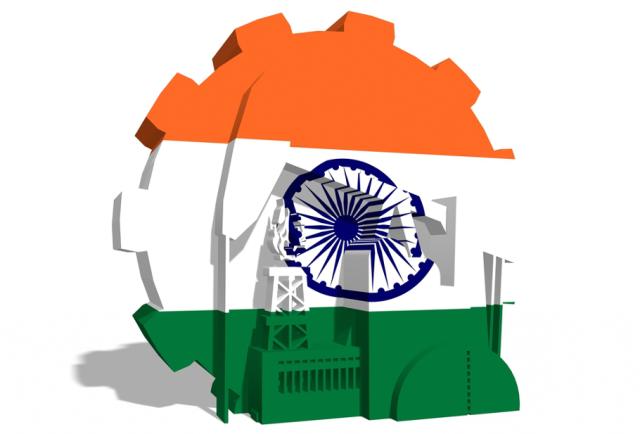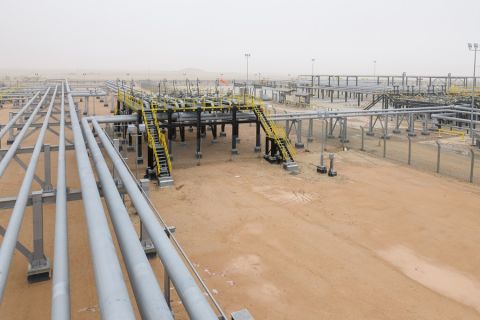
India’s state-controlled oil and gas companies have planned to spend Rs 890 billion (US$13.82 billion) in fiscal year 2018-2019 with half of the spending going toward E&P activities as the country aims to increase domestic oil and gas production.
The capex, which includes downstream and natural gas utility spending, is up less than 1%.
India’s largest oil and gas producer, Oil and Natural Gas Corp. (ONGC), along with its overseas unit, ONGC Videsh Ltd. (OVL), and another state-owned explorer, Oil India Ltd. (OIL), account for 70% of the total oil produced in India, while the remaining 30% of oil produced in the country come from private sector and joint venture companies.
The oil and gas sector, which is one of the core industries in the country and contributes about 15% to the total gross domestic product (GDP), was worth about US$139.8 billion in 2015, and the sector has tremendous growth potential.
India’s leading explorer, ONGC, is trying to enhance domestic crude oil and gas production but has failed to hit production targets during the last few years.
ONGC aimed to produce 22.732 million tonnes of crude oil in 2015-2016, but it produced only 22.368. In the two prior years, production was also lower than the target. The company aimed to produce at 23.908 million tonnes of natural gas from ONGC fields but the company produced only 21.177 million tonnes.
ONGC plans to spend Rs 320.77 billion (US$ 4.98 billion) in 2018-2019. The proposed investment would go into developing new oil and gas fields and enhancing production from existing fields.
However, as per the provisional data from Petroleum Planning and Analysis Cell (PPAC), the oil ministry’s arm, ONGC has already spent Rs 264.98 billion (US$4.11 billion) in the first nine months (April-December) of 2017-2018.
Meanwhile, ONGC has posted a 15.2% rise in net profit for the third quarter of the financial year 2017-2018 to Rs 50.15 billion (US$0.779 billion), compared to Rs 43.52 billion (US$0.676 billion) last year.
ONGC said in a statement that it has made 10 discoveries so far in the financial year 2017-18.
The company added that in the past three years, despite oil prices tumbling to record lows, it has not only sustained production from existing fields but it has also made large and calculated investment decisions to ensure sustained volumes and financial growth.
To enhance domestic oil and gas production, ONGC has consistently invested in the last few years. The corporation has flagged off 17 production-related projects with a capex of Rs. 760 billion (US$11.8 billion) in the last three years. ONGC claims that these projects would produce 69 million metric tonnes of crude oil and 118 billion cubic meters of natural gas during their profile period.
OGL, the overseas investment arm of ONGC, has planned an investment of Rs 58.86 billion (US$0.91 billion) in the next financial year. OVL has already spent Rs 40.42 billion (US$0.627 billion) in the first nine months of current fiscal.
Having stake in 37 oil and gas projects in 17 countries, which produced about 23.4% of oil and 18.9% of natural gas in financial year 2017, OVL plays a vital role in enhancing oil and gas production for the country.
OVL produced a record 12.57 million tonnes of crude oil and equivalent gas from its assets abroad in 2016-2017. The output was up from 8.92 million tonnes of oil and oil equivalent gas in the previous fiscal 2015-20116. OVL saw a peak production of 9.45 million tonnes in 2010-2011.
Meanwhile, for 2017-18, OVL is targeting 14.37 million tonnes of oil and oil equivalent gas production.
Another state-controlled explorer, OIL, which is the second-largest oil and gas producer, has also revised its capital outlay for the current fiscal year—down by 53% to Rs 42.63 billion (US$0.662 billion) compared to Rs 92.52 billion (US$1.43 billion) budgeted for 2017-18.
However, provisional data provided by the Petroleum Planning and Analysis Cell (PPAC) show OIL has already spent Rs 72.14 billion (US$1.12 billion) in the first nine months of the current fiscal year.
With a population of nearly 1.3 billion people, India imports more than 80% of its crude to meet domestic requirements.
The oil and gas industry ranks amongst India's eight core industries. India was the third largest consumer of oil in the world in 2015 after the U.S. and China.
Recommended Reading
Shipping Industry Urges UN to Protect Vessels After Iran Seizure
2024-04-19 - Merchant ships and seafarers are increasingly in peril at sea as attacks escalate in the Middle East.
Paisie: Crude Prices Rising Faster Than Expected
2024-04-19 - Supply cuts by OPEC+, tensions in Ukraine and Gaza drive the increases.
Report: Freeport LNG Hits Sixth Day of Dwindling Gas Consumption
2024-04-17 - With Freeport LNG operating at a fraction of its full capacity, natural gas futures have fallen following a short rally the week before.
Permian NatGas Hits 15-month Low as Negative Prices Linger
2024-04-16 - Prices at the Waha Hub in West Texas closed at negative $2.99/MMBtu on April 15, its lowest since December 2022.
BP Starts Oil Production at New Offshore Platform in Azerbaijan
2024-04-16 - Azeri Central East offshore platform is the seventh oil platform installed in the Azeri-Chirag-Gunashli field in the Caspian Sea.



